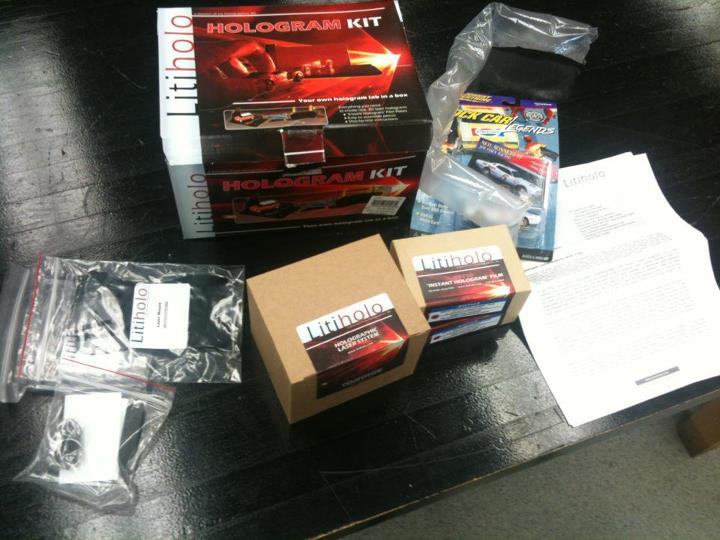I will be exploring into the world of holographic photography!
Otherwise known as holography. This is a technique that allows the light scattered from an object to be recorded and later reconstructed so that when an imaging system (a camera or an eye) is placed in the reconstructed beam, an image of the object will be seen even when the object is no longer present. The image changes as the position and orientation of the viewing system changes in exactly the same way as if the object were still present, thus making the image appear three-dimensional.
Wouldn’t it be cool to have a 3D photograph? It’ll just be like a picture on a newspaper from the world of Harry Potter. I think by far the easiest way to get started is to get a kit. You still need to setup everything in the kit… my idea is to figure out how this works and simplify it down to a point and shoot device. Then try to build another one. I want to create a device that allows people to easily take a holographic photo. First, I need to figure out how holographic photography really works.
This is the kit I will be invest it with. Thank you to Dr. Shodiev for letting me take a look at this. Check it out!

I have not set it up yet, because I’m studying for exams. I’ll update this post later, once I figure more out.
Benefits of holography: Holography vs. photography
- Pro: A hologram records scattered light in a range of directions rather than from only one direction, as in a photograph, and allows it to be viewed from a range of angles.
- Pro: Lens is required in photography, and in holography, the light from the object is scattered directly onto the recording medium.
- Pro: When a photograph is cut in half, each piece shows half of the scene. When a hologram is cut in half, the whole scene can still be seen in each piece.
- Pro: Reproducing the items in a photograph is harder, since it is a two-dimensional representation from one viewing angle. Hologram contains more depth perception cues that were present in the original scene.
- Con: A photograph clearly maps out the light field of the original scene. The developed hologram’s surface consists of a very fine, seemingly random pattern, which appears to bear no relationship to the scene it recorded.
- Con: A photograph can be viewed in a wide range of lighting conditions, whereas holograms can only be viewed with very specific forms of illumination.
- Con: Hard to setup!